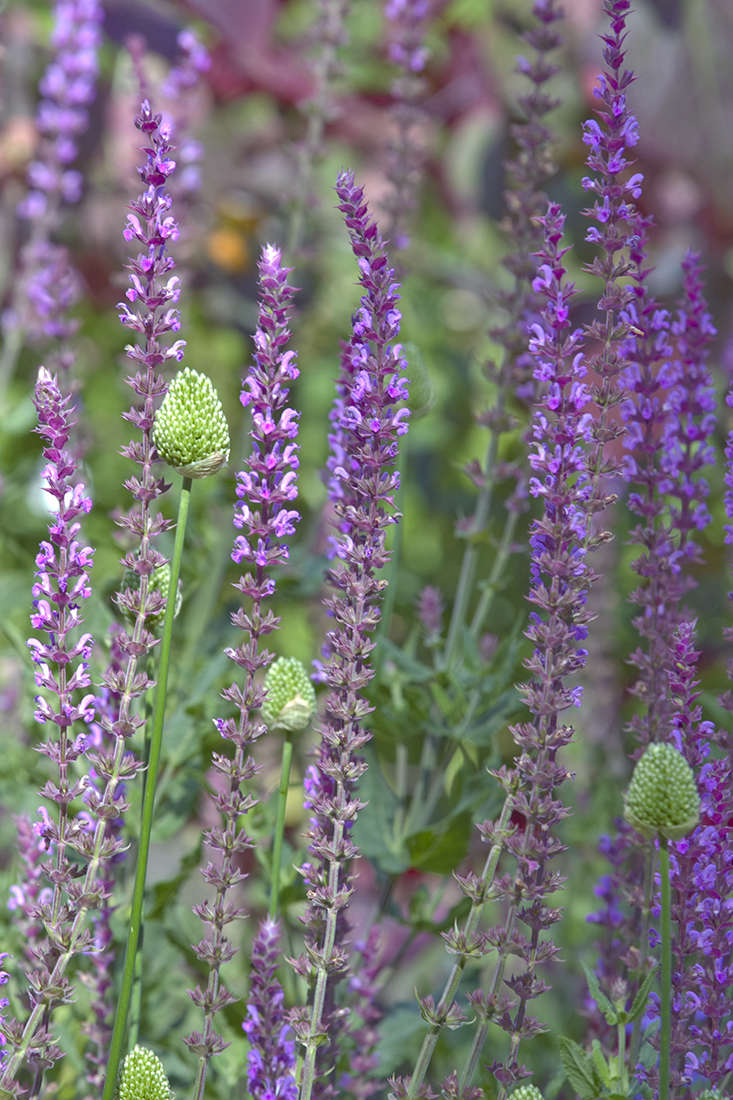Salvia, Salvia: “Savior Among Plants”
Ornamental sage, better known as salvia, comes in more than 900 varieties of every size and shape, whether as tender annuals or hardy, herbaceous perennials. What they all have in common is jewel-like color and a predilection for good drainage and heat: in other words they are a gift for gardens in drought.
Photography by Britt Willoughby Dyer, except where noted.



Cheat Sheet
- Salvias are a huge family, ranging from tender plants with intensely colored flowers to tough, evergreen herbs.
- They can do elegant or cottage, large or small, in full sun or dappled shade.
- Common sage (Salvia officinalis) and clary sage (Salvia sclarea) are best known as aromatic plants, with hairy leaves that release oil when rubbed.

Keep It Alive
- Salvias thrive in arid conditions, appreciating free-draining soil.
- With regular deadheading, they can flower from late spring until the first frosts.
- For exposed, coastal areas, Salvia patens is particularly suitable. ‘Blue Angel’ is electric blue, and has an RHS Award of Garden Merit.

Salvia is in the Mentheae family; broadly, it is a type of mint. This makes sense when you look at the structure and aromatic properties of common sage, grown for culinary and medicinal purposes, and clary sage, which is used as an essential oil. Common sage is an all-round life saver and can be drunk as a bitter tea: worth it for a cheap body cleanser or aphrodisiac.
N.B.: Russian sage (Perovskia atriplicifolia) is not a true sage though it is a close relation and also a good “doer” in the garden.


Sage can become large and unwieldy in an herb garden and can be better placed among flowers, with its wonderfully textured foliage. Purple and variegated varieties are especially useful.
Beth Chatto grows purple sage with spiky eringium, for contrasting color and texture. See: Required Reading: Beth Chatto’s 5 Favorite Flowers for a Gravel Garden.

N.B.: Looking to add to your garden this spring? Our Perennials 101: A Field Guide to Planting, Care & Design can help:
- If you’re interested in edibles with medicinal benefits, consider Thyme 101, Rosemary 101, and Nettles 101.
- Our Hardscape 101 guides will help you make your dreams a reality. Explore Edible 101 for tips on layout, planting, and design for your favorite edibles.












Have a Question or Comment About This Post?
Join the conversation (6)